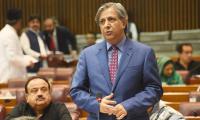BEIJING/SHANGHAI: China´s biggest listed banks posted results that showed shrinking interest margins caused first-quarter profits to be near-flat, although there was a glimmer of hope as the pace of mounting bad debts slowed at some of the lenders.
The Big Five lenders - Industrial and Commercial Bank of China (ICBC) , China Construction Bank Corp (CCB) , Agricultural Bank of China (AgBank) , Bank of China (BoC), and Bank of Communications Co (BoCom) , reported quarterly earnings on Thursday and Friday.
Their net interest margins (NIMs) - the difference between interest paid and earned - slipped, as the country´s economy grows at its slowest pace in a quarter century.
NIMs, a key gauge of bank profitability, continued to fall across the board in the wake of Beijing´s six successive benchmark interest rate cuts in 2014-15. ICBC, the world´s largest lender, reported on Friday NIM of 2.12 percent at end-March, compared to 2.16 percent at end-December.
NIM compression was also felt keenly at BoCom, which saw NIM droop to 1.57 percent at end-March, it´s lowest since at least 2011.NIMs at BoC, AgBank and CCB also showed a similar trend and were at their lowest levels since 2011-2012. As margins shrank, profit growth at all five lenders remained near flat, although CCB outperformed its contemporaries with a 3 percent rise in first-quarter net profit.
And the margin slide is likely to continue this year. The president of BoC said in March that increasing interest income this year will be "impossible". The news around bad debts was more cheerful, though, with some of the lenders showing a decline in their non-performing loans (NPLs) ratio.
While CCB and BoCom reported unchanged bad loan ratios from the quarter before, BoC, AgBank and ICBC all reported a slight fall in theirs.
The arrest of the rise in non-performing loan ratios may be a sign that the measures China´s banks have adopted to fight soured debt - from increasing their volume of write-offs to using Beijing-led debt-for-equity swaps for large struggling state-owned-enterprises - are working. But the struggle this year is not over as analysts predict added pressures from a cooling economy.
Chinese power company had intended to acquire up to 18.336 billion ordinary shares of K-Electric, representing 66.4...
MARI also successfully drilled and tested another appraisal well in the Mari Ghazij formation located in Mari D&PL
Gold rates decreased by $30 to $2,381 per ounce in the international market
Growing number of Americans have seen their savings dwindle as rising prices squeeze budgets while interest rates stay...
IMF will closely watch the privatization of PIA by the end of June
PSX lays down the groundwork to encourage listed companies to adopt ESG reporting in line with global standards







